Forever 21, a staple in the fast-fashion industry, has a rich history that traces back to a small store in Los Angeles. Founded in 1984 by Do Won Chang and Jin Sook Chang, the brand started as “Fashion 21,” catering primarily to the Korean American community in LA. With a humble beginning in a 900-square-foot space, the Changs leveraged their savings and keen sense of style to offer trendy, affordable clothing that quickly resonated with young shoppers. Within its first year, Fashion 21 grossed a remarkable $700,000, laying the foundation for what would soon become a global fashion empire.
The early success of Fashion 21 led to a rebranding as Forever 21, marking the brand’s transition from a local favorite to a fast-fashion juggernaut. By tapping into the latest trends and offering them at unbeatable prices, Forever 21 rapidly expanded, opening new stores across the United States and eventually worldwide. The brand’s strategy was clear—deliver the latest fashion trends quickly and affordably, appealing to a broad audience eager for fresh, stylish looks. This approach not only fueled its growth but also set the stage for its dominance in the global retail market.
However, the rapid expansion of Forever 21 came with challenges. As the brand grew, it faced intense competition, shifting consumer behaviors, and the rise of online shopping. Despite these hurdles, Forever 21 remained a key player in the fashion world, continuously evolving its business model and design strategies. Today, the brand is recognized not just for its fast fashion but also for its significant impact on the retail landscape, embodying the highs and lows of a dynamic industry.
Forever 21 ‘Badass Women’s Commercial
How to tell if Forever 21 is vintage from the logo
Forever 21 has undergone significant brand evolution since its inception, with its logo being a key indicator of different eras in the brand’s history. Identifying the specific logo used on a garment or item can help determine whether it is vintage and from which period it originates. Below is a guide to help you identify the Forever 21 logo from different time periods based on the logos provided.
1984 to 2014 Forever 21 logo
- The logo features a bold, blocky font, consistent with the aesthetic trends of the late 20th century.
- The spacing between the letters is slightly narrower, giving it a compact and strong visual presence.
- This logo reflects the brand’s early identity as a trendy and youthful fashion retailer targeting a young demographic.
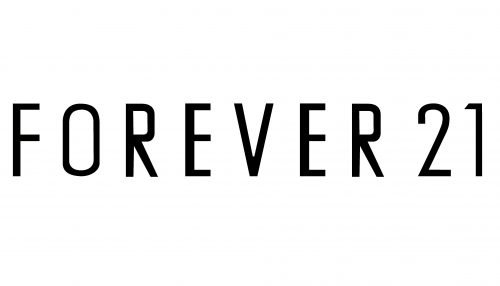
1984 to 2014 Forever 21 logo
2014 to now Forever 21 logo
- The current logo introduces a more streamlined and modern font, reflecting the brand’s adaptation to contemporary design trends.
- The letter spacing is more even, giving the logo a cleaner and more minimalist appearance.
- This update aligns with the brand’s efforts to appeal to a broader audience while maintaining its youthful and fashionable image.
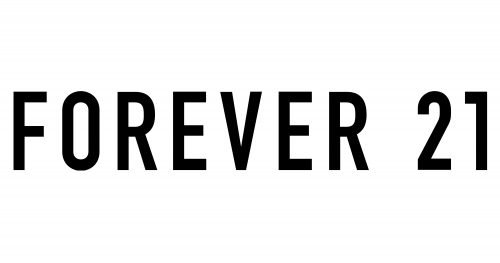
2014 to now Forever 21 logo
How to tell if Forever 21 is vintage from the tags
The evolution of Forever 21 tags over the years reflects the brand’s journey from a small store in Los Angeles to an international fashion powerhouse. As the brand grew, its tags adapted to changing trends in design and branding. The tags from different eras can help identify the period a garment was produced, offering valuable insights for vintage enthusiasts and collectors.
Need assistance with vintage tags or labels? Upload a picture on our vintage tag identification page, and we’ll help you out!
1990s vintage Forever 21 tags
- Simple design with minimalistic text, often just the brand name “Forever” or “Forever 21” in plain fonts.
- Tags are typically small and made from basic materials like cotton or polyester blends.
- The tags may include “USA” or “U.S.A.” under the brand name, indicating the brand’s early domestic production focus.
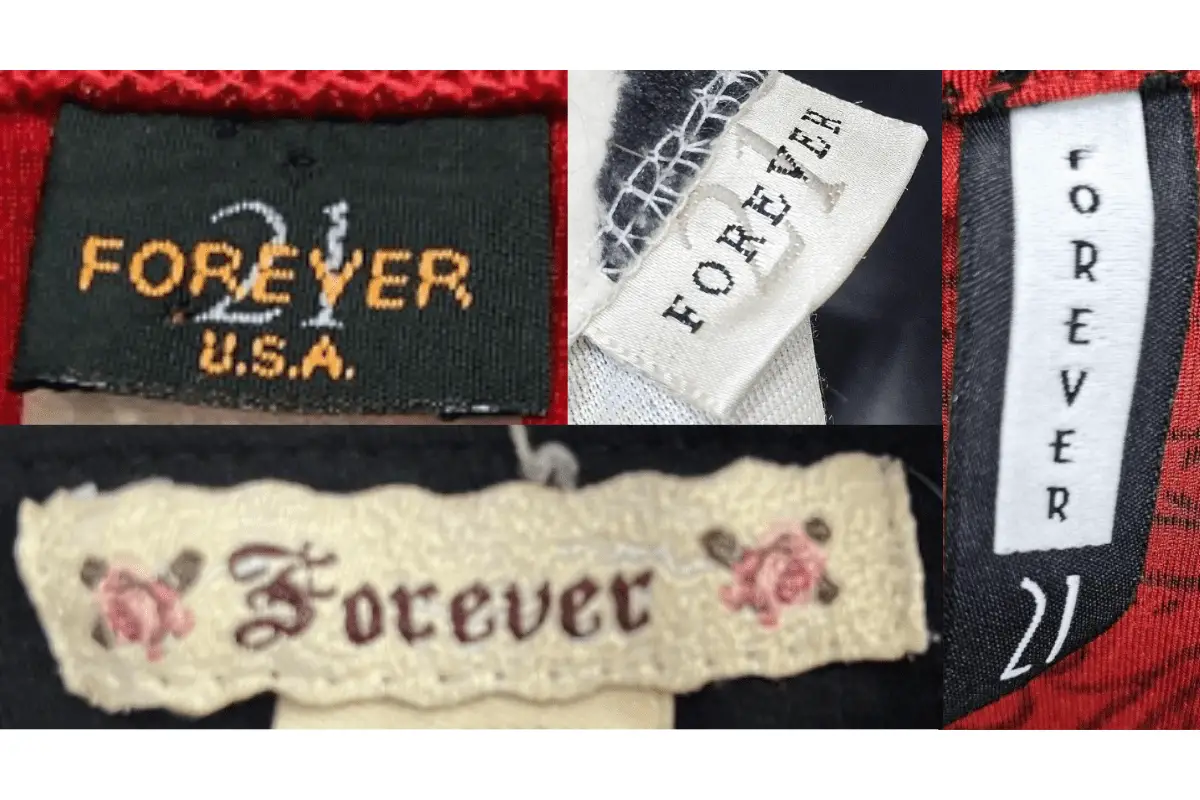
1990s Forever 21 tags
2000s vintage Forever 21 tags
- More variety in fonts, with a mix of serif and sans-serif typefaces, reflecting the brand’s growing experimentation with style.
- Introduction of decorative elements such as small graphics or logos, often seen alongside the brand name.
- Tags may include additional branding elements like “XXI” or variations thereof, indicating the brand’s expansion and experimentation with sub-labels.
- Materials used for tags become more diverse, including satin and other smooth fabrics, offering a more polished look.
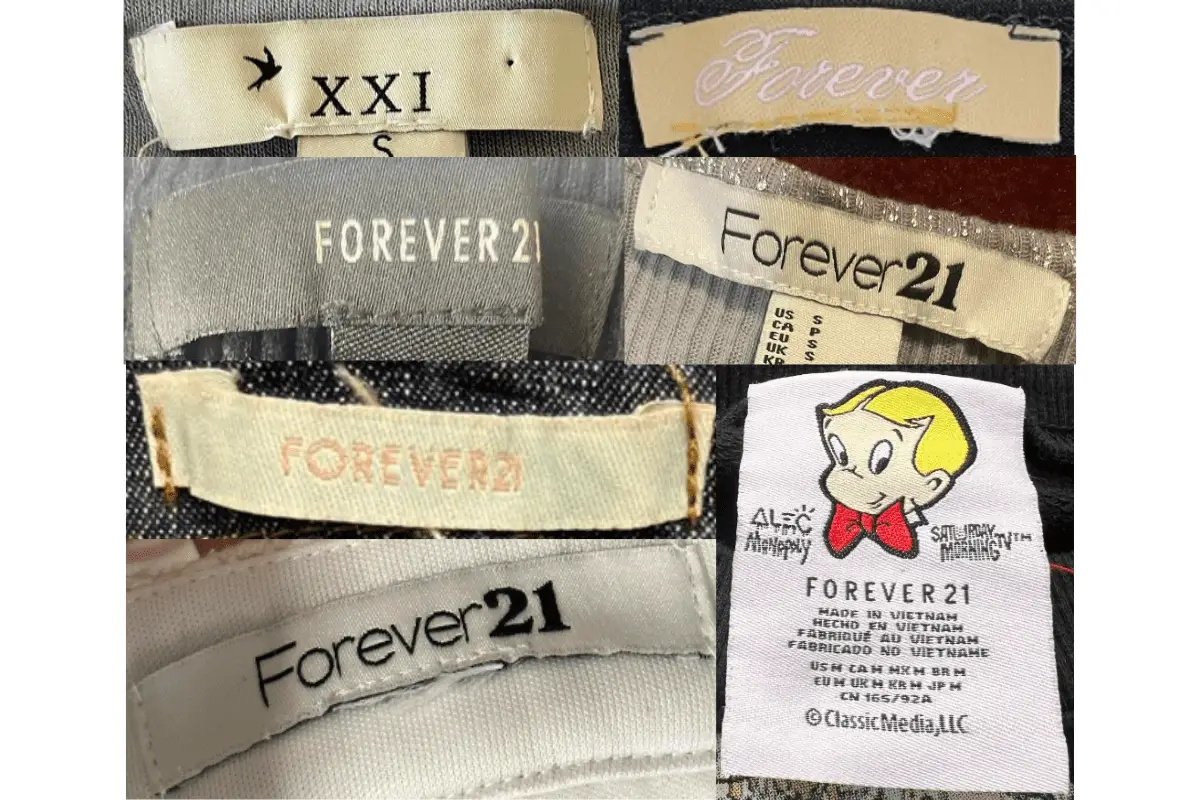
2000s Forever 21 tags
2010s vintage Forever 21 tags
- More sophisticated design, with cleaner fonts and sometimes minimalist aesthetics.
- Introduction of specialized tags for different product lines like “Forever 21 Men” or “Forever 21+,” indicating the brand’s expansion into specific markets.
- Tags may also feature collaboration details, such as with well-known artists or designers, reflecting the brand’s involvement in more high-profile projects.
- Use of modern materials for tags, including higher-quality fabrics and printing techniques that provide a more luxurious feel.
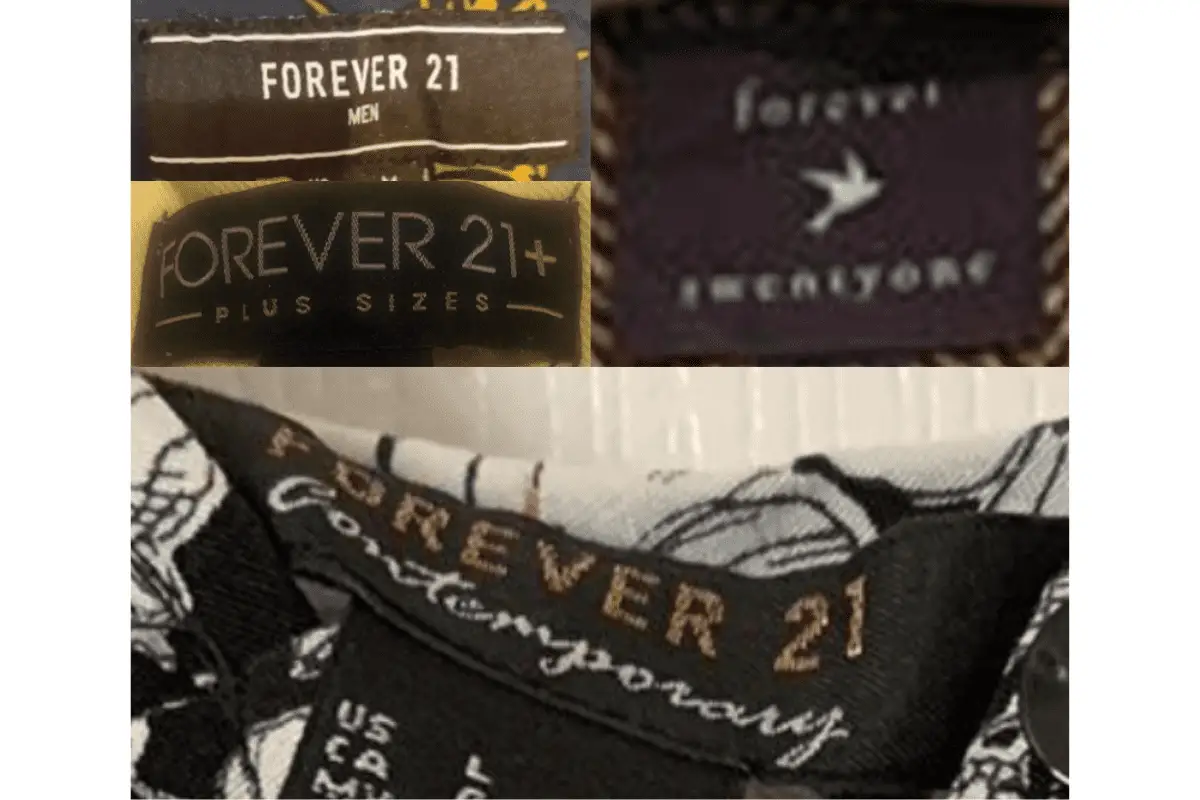
2010s Forever 21 tags


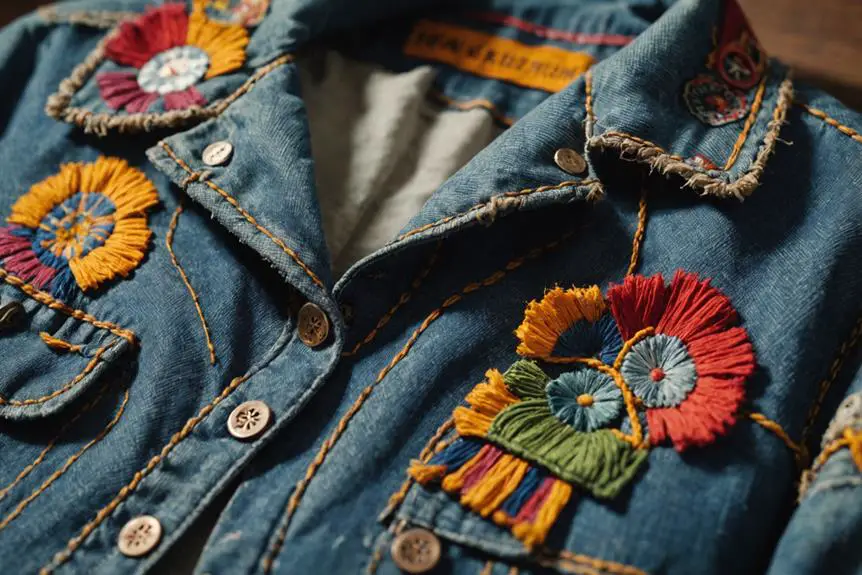


Very energetic blog, I loved that bit. Will there be a part 2?